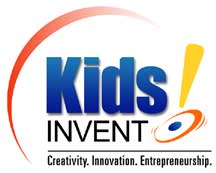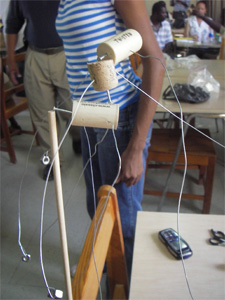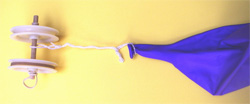 |
Toy Tinker
Spring 2008
Kids Invent!
1662 E. Fox Glen Avenue
Fresno, Ca. 93730
559.434.3046
|
Pedagogic model
What
is inventing to learn? It is a process that engages kids in inventing
and learning. It instantly generates relevancy and curiosity that
sustains them through the learning process. And, it begins with a
challenge:

Kids
respond by building models to meet the challenge. They design by
building – the rapid prototyping process. They play with the model to
test it and get ideas on how to improve it. Then they re-build and
re-test. It’s an iterative process – just like in the real world.
Ideally the testing (playing) involves making measurements so kids get the math experience of estimating,
measuring, and collecting and analyzing data.
Kids share their designs with others, so we can discuss what design features were creative and which were
especially helpful in meeting the challenge.
The
reflection phase is where we introduce the concepts and terminology
that kids need to communicate the ideas they have already learned. Note
that traditional learning starts here – before interest and relevance
have been established.
Lastly,
we encourage kids to be imaginative and to continue working on this or
related models. We tell them we would like to see what they can do at
home. They can get their families or friends involved. When kids
respond to this “imagine” challenge, we extend the learning process
beyond the time they spend with us.
Balancers
Use wine corks (or substitutes), wire, and weights to make gizmos that look like they defy gravity.
Here is the output from a team of teachers on St. Vincent:
 |
Try This: the balloon chariot
In unleashing creative ideas, simple projects often work best. Here’s one that requires only balloons,
string, rubber bands, wheels and dowels and is challenging enough for any age.
The challenge is to build and test a wheeled vehicle that is balloon powered using the fewest possible
materials and getting the longest distance (along a proscribed direction).
This
Balloon Chariot uses two wheels (from Goodwill), a dowel, two rubber
bands, a balloon and string. The string not only connects the balloon
to the wheels, it also controls the rate of airflow out of the balloon
(with a slip knot). The wheels provide the drag that steers the balloon
– much like fins steer a rocket.
There
could be dozens of other designs that succeed in getting the balloon
vehicle to travel across the room over a smooth floor. Celebrate each
design regardless of its success. Have students measure and record each
test. They get feedback on how well they are doing and they get
experience making and recording measurements.

Yet another use for balloons:
Balloon-powered cars are a great activity and challenge for people of any age.
University students and elementary school students enjoy and learn from the activity.
Getting the car to go far (20m or more) is tough, but can be done.
While giving teacher workshops in northern Sweden, Ed found one group of teachers using
a balloon in a new way – as a great noise maker.
The second (blue) balloon was cut at the neck and inserted onto a piece of plastic tubing
that was the car’s jet nozzle. Not only did the car go far, it made a cool sound as it went:

Training
Learn robotics, inventing, video creation, and more.
Contact Kids Invent by either calling customer service or sending us an e-mail
|
|